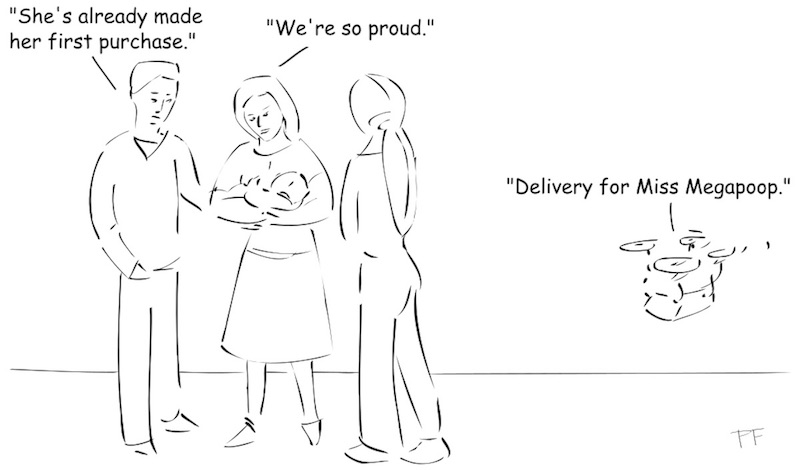How to calculate the lifetime value of a customer
Calculating the lifetime value of a customer is somewhat like calculating the value of a company you would like to acquire. While you can find many methods of doing the calculation on the web, there is only one correct answer. For mergers & acquisitions, and for lifetime value of a customer, the only correct calculation method is Discounted Cash Flow, meaning the present value of all future cash flows the acquired company or customer is likely to generate. No other method is correct, though there are some acceptable approximations.
The theory and experience of NPS practitioners is that the operating profit per customer is highest for Promoters and lowest for Detractors. Do not confuse revenue and operating profit. You can have customers that generate lots of revenue, but even more cost. They have negative lifetime cash flow, unless you can turn them around.
The main problem you will face
Unfortunately, most companies are not able to calculate profitability by customer. Financial reporting usually works by product line, not by customer. Asking your finance person to provide you an accurate cash flow from each of your top 100 customers individually will probably be a waste of time. Businesses that depend on large contracts are an exception, and you may well be able to calculate the cash flow and therefore the lifetime value of each contract.
Suggested method
In the absence of accurate standard reporting, a good starting point is to work with your finance person to calculate a ‘proxy P&L’ for each of your different customer categories. Unfortunately, there are accepted accounting standards for many things, but not for the precise methods used to calculate the lifetime value of a customer. Segmenting customers in a useful way is a critical step. The first distinction to be made is between customers who have an ongoing contractual relationship with your company, and those who buy things, but have no contractual relationship. The former category is easy to work with. Past contract renewal rates can be used to determine future expectations. Direct Marketing principles need to be applied to the latter category. Direct Marketers think in terms of ‘RFM’: Recency, Frequency, and Monetary value.
Other customer segmentations that are useful will depend on your business model. If you sell both direct and via resellers, lifetime value expectations will be different. They will also differ between very large customers who depend on your company to run their business, and others. If you have the data, NPS categories can be used to refine renewal rate expectations. Here are some examples of what needs to be used in the calculation:
- List prices.
- Contra-revenue, meaning discounts you give from the list price. While large customers tend to attract higher ‘standard’ discounts, you will generally have easier discount negotiations with Promoters than with Detractors. Since contra-revenue is not part of any standard P&L, it is often forgotten.
- Net revenue, meaning list price less contra-revenue.
- Cost of Goods Sold. This includes costs of ‘free’ replacement items and additional merchandise that you may have to supply Detractors to help turn them around. While ‘Cost of Goods Sold’ sounds like it should include the cost of selling and marketing, it does not. Selling, General and Administrative costs are ‘below the line’, which means they are not counted in the Gross Margin calculation, but are considered when calculating operating profit.
- Where Detractors or Passives leave you sooner than Promoters, you can assign a cost of attracting a new customer. Many sales teams are split into ‘Hunters’ who go after new customers and ‘Farmers’ who develop deeper relationships over time and are measured on retention and additional business for existing customers. Farmers generally cost about a quarter of the Hunter cost per revenue dollar. If you don’t split your sales teams this way, agree a reasonable rule of thumb with your finance partner while you try to measure it more accurately. Marketing costs can be split that way too.
If you are not able to get to this level of detail, calculating expected lifetime revenue per customer is a lot better than doing nothing.
If you can only work on one thing for a contract business
If all this is too sophisticated for the time you have available, here is the single area you should focus on, if your business depends on annual contracts. Just agree the value of a one-percent improvement in contract renewal rates. It is easy to calculate, and you probably have the data on past renewal rates. If you work in a large company, you have de facto experiments in place. By this I mean you can simply observe different measurable business practices or levels of customer-centric performance that have happened by accident, rather than by design. Look at how they have affected renewal rates. If you seem to have nothing relevant, test new practices in part of your company and compare renewal rates. You can test multiple things simultaneously, provided you keep a control group, where nothing has changed. Improved renewal rates were how we justified Customer Success teams at HP Software. These teams worked with customers, free of charge, to make sure they were using software effectively and achieving the benefits they expected.
Conclusion
Compared to the others, Promoters stay with you longer, buy more products, escalate less, are less price sensitive and are less expensive to sell to and service. Once you have agreed the lifetime values of the different NPS customer categories, you and your CFO (or delegate) should present it together to your leadership team for approval. Even if you are not able to do it right away, it should be part of your formal NPS implementation plan. Your credibility depends on it. Your company’s long-term commitment to NPS also depends on it.
Final note: the above is a somewhat shortened version of a chapter in our book Net Promoter – Implement the System.



